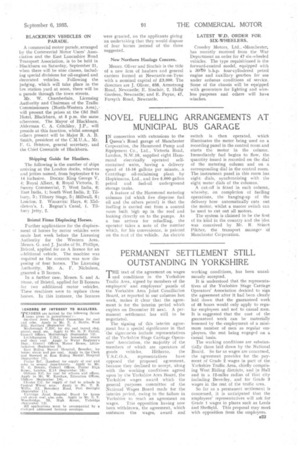NOVEL FUELLING ARRANGEMENTS MUNICIPAL BUS GARAGE AT
Page 37

If you've noticed an error in this article please click here to report it so we can fix it.
I N connection with extensions to the Queen's Road garage of Manchester Corporation, the Hammond Pump and Equipment Co., Ltd., Victoria Road, London, N.W.10, supplied eight Hammond electrically operated selfcontained units, having a delivery speed of 15-16 gallons per minute, za Centrifuge oil-reclaiming plant by Hopkinsons, Ltd., and five 5,000-gallon petrol and fuel-oil underground storage tanks.
A feature ol the Hammond metering columns (of which five dispense fuel oil and the others petrol) is that the fuelling is carried out from a control room built high up in the roof and looking directly on to the pumps. As a bus arrives for refuelling, the operator takes a note of the number which, for his convenience, is painted on the roof of the vehicle. An electric switch is then operated, which illuminates the meter being used on a recording panel in the control room and starts the motor in the column. Immediately fuel begins to flow, the quantity issued is recorded on the dial of the metering column and on a corresponding dial in the control room. The instrument panel in this room has eight dials, synchronizing with the eight meter dials of the columns.
A cut-off is fitted in, each column, whereby, on completion of fuelling operations, the hanging-up of the delivery hose automatically cuts out the motor, whilst a master switch can be used to cut out all motors, The system is claimed to be the first of its kind in the country and the idea was conceived by Mr. R. Stuart Pileher, the transport manager of Manchester Corporation.




























































































